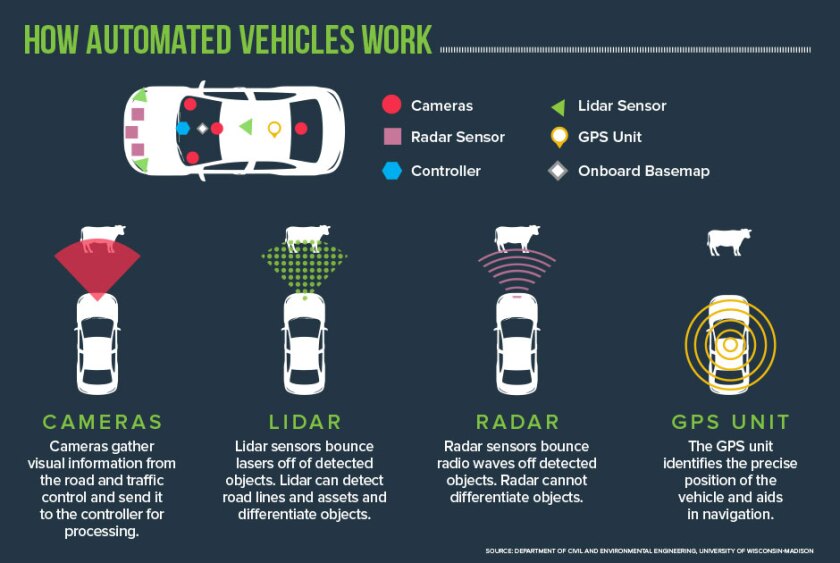AppliMarkets: Your Go-To Resource for App Insights
Explore the latest trends, reviews, and tips in mobile applications.
Driving into the Future: Are We Ready for Robot Chauffeurs?
Explore the future of transportation! Are robot chauffeurs ready to take the wheel? Discover the possibilities and challenges awaiting us!
The Rise of Robot Chauffeurs: How Autonomous Vehicles Are Changing Transportation
The rise of robot chauffeurs marks a significant turning point in the evolution of transportation. With advancements in artificial intelligence and sensor technology, autonomous vehicles are now capable of navigating complex urban environments with minimal human intervention. This shift towards self-driving cars is not just a technological marvel; it promises to enhance road safety, reduce traffic congestion, and lower transportation costs. As companies like Tesla, Waymo, and Uber ramp up their investments in this space, consumers are beginning to embrace the idea of riding in a vehicle without a human driver, highlighting a growing acceptance of autonomous vehicles in daily life.
Moreover, the impact of robot chauffeurs extends beyond personal transportation. In logistics and delivery services, autonomous vehicles are reshaping how goods move from point A to point B. Companies are exploring the use of self-driving trucks for long-haul deliveries, which could not only lower labor costs but also improve efficiency and reduce carbon emissions. As regulatory frameworks evolve and technology continues to improve, the transportation landscape will undergo a profound transformation. The widespread adoption of autonomous vehicles could redefine urban mobility, making it more accessible, efficient, and environmentally friendly.

What Are the Legal and Ethical Implications of Self-Driving Cars?
The advent of self-driving cars has sparked a complex discussion surrounding the legal implications associated with their integration into society. One of the primary concerns is the determination of liability in the event of an accident. Traditional traffic laws focus on the actions of human drivers; however, with autonomous vehicles, the question of whether the liability falls on the car manufacturer, the software developers, or the vehicle owners becomes increasingly complicated. Moreover, many jurisdictions are grappling with the need to amend existing traffic laws or create new regulations that specifically address the unique challenges posed by these vehicles.
Alongside the legal considerations, the ethical implications of self-driving cars can’t be overlooked. For instance, how should an autonomous vehicle prioritize the safety of its passengers versus pedestrians in an unavoidable accident? Ethical dilemmas akin to the famous 'trolley problem' become pressing matters for programmers and policymakers alike. Additionally, issues of data privacy arise as these vehicles collect vast amounts of data for functionality and optimization purposes. Legislators must navigate these treacherous waters to ensure ethical standards are upheld while fostering innovation in this remarkable field of technology.
Can We Trust Robot Chauffeurs? Examining Safety and Reliability
As the development of autonomous vehicles continues to gain momentum, the question arises: Can we trust robot chauffeurs? Safety and reliability are paramount concerns for potential users and regulators alike. Early tests of self-driving technologies have shown promising results, with numerous companies claiming their systems outperform human drivers in accident prevention. However, incidents involving autonomous vehicles have sparked public debate about their reliability. According to various studies, while autonomous driving systems can respond to certain scenarios more effectively than humans, they still face challenges in unpredictable environments, raising questions about their ultimate safety.
Furthermore, the complexity of human behavior on the road poses a significant hurdle for robot chauffeurs. Unlike human drivers who can rely on intuition and experience, robots must process vast amounts of data from sensors and cameras in real-time to make safe decisions. This reliance on technology makes it crucial to evaluate the effectiveness of robot chauffeurs in various traffic conditions. Will they be able to handle emergencies or interpret the intentions of other road users? These considerations are vital in understanding whether society can place its trust in these automated systems as reliable and safe alternatives to human drivers.